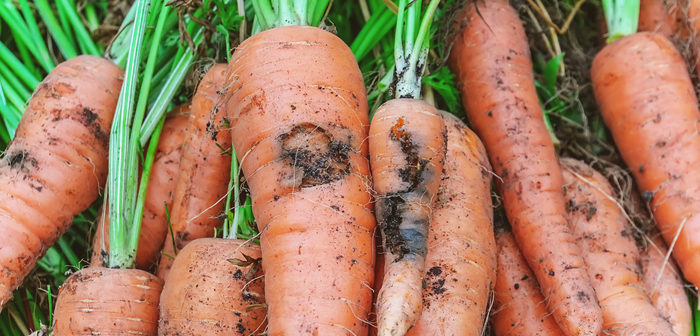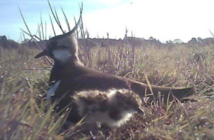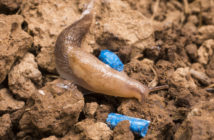As carrot root fly begins to emerge for the season, Agrovista agronomist Ashley Cooley hopes to safeguard his customers’ crops from the pest without turning to pyrethroids.
“As an industry, we’re now moving away from pyrethroids. We’re faced with resistant pest populations, as well as the obvious damage they do to beneficial insects,” said carrot specialist Mr Cooley.
“My aim is to have a successful season with all of my veg customers whilst avoiding using pyrethroids all together. We do have other options for control, so it’s about deploying what is available to us in a targeted way.”
Female carrot flies are attracted to the rich scent of the crop’s foliage, emerging at the end of April when cow parsley is in full flower. They lay their eggs at soil level, which once hatched, feed on the roots.
A crop can by targeted by more than one generation of carrot root fly (Psila rosae), as the transition from egg to adult is completed in just three months, with larvae pupating in the soil. This leaves early sown crops at high risk from damage.
Mr Cooley said: “First symptoms are wilting and discolouration of outer leaves, leading to anything from stunted growth through to crop failure. As roots then develop, the larvae burrow into the crop leaving tunnels below the skin surface – resulting in an unmarketable end product.
“The pest is attracted to any umbellifers plant such as carrot, parsnip, celery, parsley and coriander, so site selection for these high-risk crops is a must. Avoid planting fields of umbellifers crops together where possible, and use rotations to avoid over-wintering pupae in the soil.
“If you believe you have a problem with carrot fly, delay sowing your maincrop varieties until later in June, as it’s the second generation of the pest which can prove most damaging.”
Although prolific, the adults are weak fliers unable to rise above 50cm, meaning barriers and covers can be one of the most effective non-chemical control methods. Crops growing in sites with no adjacent sheltered habitats are also at lower risk, as the adults overwinter in hedgerows.
For chemical control, monitoring the lifecycle of cow parsley and using suction traps to check flight status will optimise the timing of insecticide products.
Ashley added: “An effective product registered for carrots is cyantraniliprole (MinectoTM One). It’s systemic so kinder to beneficial insects, as well as being reasonably flexible timing-wise because it lasts for around three weeks.
“The product works by restricting egg laying and therefore reduces larvae damage to the roots. It offers good control of first and second generations of carrot fly, but also has the added benefit of controlling willow-carrot aphid.
“I believe that a combination of non-chemical options such as using netting and optimised site selection, alongside applications of cyantraniliprole, will successfully overcome carrot fly whilst protecting the beneficial insects that we desperately need to control other prolific pests.
“Yield quality is so important in commercial veg growing, we simply can’t afford to damage our natural allies.”




